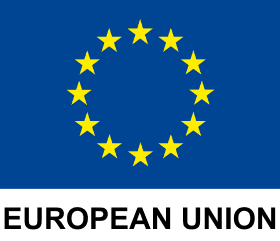Index
Get the latest news right in your inbox
The WealthTech revolution began just over half a decade ago with a new understanding of wealth management and equity investment financial services.
This concept, originally considered part of its big brother, FinTech, brings together a series of players that converge around the same type of financial product and service. The management of assets and savings, as well as the diversification of investment methods for the wealth generated, has been transformed by the implementation of technologies that streamline their use and allow them to create new ways of operating.
There is a term that comes to mind when we talk about any of the X-Tech: democratization. Technology has made it possible for individuals and less qualified professionals to self-manage certain areas previously reserved exclusively for the largest and wealthiest companies.
What is WealthTech
WealthTech is the confluence of technology (Tech) with the area of finance that deals with wealth management and investment. This concept is used to refer to the businesses, users, initiatives and platforms of this sector and the methods, applications and tools that make their activity possible. Thus, we obtain a web of interrelationships between crucial players that make up the so-called WealthTech ecosystem.
The digitization of businesses dedicated to investment services took place almost two decades ago, however, it was not until about 5 years ago that the term WealthTech started to be used. Technology in the service of finance and banks arrived a long time ago, but the philosophy of autonomous online management by users and professionals without technical expertise is much more recent.
A clear distinction must be made between traditional financial companies that digitized certain procedures and those innovative and disruptive businesses that could not even have come into being had it not been for the ad-hoc creation of digital platforms and technological tools specially designed for their activity. In this way, it was possible to create new product and service categories in the sector that were previously unimaginable.
WealthTech stands out for its management without intermediaries and for users' online and remote access to its financial investment platforms. Likewise, businesses in this area make use of big data, their own methodologies and dynamics of social networks (Social Trading), robotic process automation (RPA and softbots), artificial intelligence, facial recognition and machine learning.
These platforms and their technological power are used by investment and wealth management professionals as well as the average user.
Types of WealthTech companies
The WealhTech ecosystem is the set of players in the sector that with interrelationships of many types work as a coordinated mechanism to shape a thriving industry and from which we already obtain overwhelming figures compared to what could be thought only a few years ago. Already in the far back 2018 investments in WealthTech companies exceeded the figure of 3.5K million dollars.
That said, how has this been achieved? With a complex but complete landscape that is constantly evolving and improving every year, improving its proposal and leading innovation. The following is a rough breakdown of the different types of WealthTech that exist:
- Digitized finance companies with WealthTech products: These could well be at the bottom of the list or at the top. Last because it was only 12 months ago that traditional banks and other FinTechs began to offer WealthTech-native autonomous investment services; and first because they were the first in the sector to take the step towards the digitization of their activity and the precursors of the financial services we all know.
- Technology providers: Something similar happens with them as with the previous ones. Two situations have occurred: entrepreneurial businesses have knocked on their door to request the development of technology that could implement the model they had in mind, or technology startups developing products, on their own initiative, have created WealthTech solutions that the financial sector has then used to create businesses or product ranges. Of these providers, those that offer key technologies to make it possible for these businesses to operate and grow stand out, such as: digital onboarding solutions (KYC - Know Your Customer), anti-fraud controls and identity verification, electronic signature for contracting or certified communication for secure and supported customer relations.
- Trading: Well known by all for the amount of advertising they are doing lately. And if they can make such an advertising investment it is because they are growing at a dizzying pace. Trading platforms are revolutionizing personal finance and wealth management thanks to the best digital solutions that are allowing them to increase their conversion rate in their onboarding processes, gaining more and more users without any risk in all markets.
- Social trading and digital brokers: Now, anyone can copy the investment methods and portfolios of the most experienced brokers, as well as those of their friends. Forums, opinions and community, these platforms bring social networking and telegram group dynamics to investing.
- Cryptocurrency Exchanges: These platforms work in a very similar way to typical trading platforms, however, they base their focus on crypto assets. Although many trading platforms already allow trading cryptocurrencies, it is these specialists that make them their core.
- Marketplaces: The investment services tracker. Comparative platforms and other similar options help make decisions based on data and the use of automation and information extraction to facilitate investment activity.
- Investment tools: More used by professionals than by the average user, these application kits track portfolios, alert users to fluctuations or when expected returns are being achieved, and plan calendars to automate purchases and sales.
- Compliance and RegTech: WealthTech, like the rest of the financial sector, must comply with the technical and legal norms and standards set by the regulators of each market and industry. To this end, RegTech has created digital business solutions that automate compliance with the most demanding standards that are integrated in an agile way in all operations and processes of the sector's businesses.
- Financial Advisors: These can be considered as one of the most traditional models within what we understand by WealthTech. They bring to the digital and online plane, completely remote, the financial advice to the use that was previously done in traditional onsite banking. There are those that carry out operations and those that simply advise their clients to do so on other platforms such as those mentioned above.
- Robo Advisors: Passive management can be configured to be automated and act as the client would according to the parameters set by the client.
- Robo-Retirement: These are robo-advisors' platforms with a somewhat different proposal but with the same basis. This proposal is that of retirement plans; however, they are based on a format suitable for the baby-boom generation and with simple interfaces, although it is suitable for any user.
- Quant-Advisors: Technology taken to the extreme and at the service of trading and brokers. Artificial Intelligence, Big Data and Machine Learning work together to predict changes, modify the settings that the user gives to the robo advisors autonomously to improve their performance and thus make successful operations. Alongside them, algorithmic trading makes them work in real time.
- Lending and crowdfunding: These participative financing systems are not new, but they have been introduced into the WealthTech ecosystem to complete its offer and reach more users.
- Microinvestments: Born from the previous type but with a broader focus. Platforms have been created that bring together all kinds of initiatives, from the granting of microcredits to P2P (Peer to Peer) models.
We have seen how, just when we thought WealthTech had nothing left to innovate, it has been able to reinvent itself to either use technology to diversify its offering or reinvent its business model with disruptive proposals based on a new way of understanding personal finance.
FinTech and the rest of the X-Techs: similarities and differences
Both WealthTech and FinTech share the same regulatory framework and objectives. Many have denied considering the former as a distinct entity from the latter, and time has shown that they were wrong. The differences between the two are clear: WealthTech is clearly different from its big brother, although it works alongside it, especially in its commercial and advertising proposal, as well as in its business model.
Convergence has arrived, but with clear differentiation. The fact that a wallet card additionally offers investment services does not mean that it is the same company. We see how many FinTech companies have WealthTech partners to jointly offer this type of investment services, for which they earn a commission by acting as a business partner.
This is similar for PropTechs, which use third-party WealthTechs to offer their clients alternative financing for their mortgage loans or home insurance (InsurTech).
Companies belonging to both areas must comply with KYC (Know Your Client) requirements and conform to AML (Anti-Money Laundering) regulations such as AML6 (Sixth European Money Laundering Directive). The regulatory framework affecting them is basically the same. Even the cryptocurrency exchangers furthest from the norm (DeX and others) are already being taken into account by regulators in many markets.
As for the onboarding of their clients, the opening of a bank account, which has its own processes, follows the same rules as the sign up on any trading platform. Identifying clients under eIDAS (electronic IDentification, Authentication and trust Services) standards and performing the electronic signature and contracting processes under common standards has helped WealthTech companies that provide technological solutions such as Tecalis to standardize methods to optimize this type of process.
How WealthTech is evolving in 2022 and what to expect in 2023
As we have been advancing, technological and business convergence is marking the current situation of WealthTech. Partnerships between companies such as wallet cards or neobanks with companies in the sector are driving the latter towards growth and greater recognition among users who are more unaware of its advantages.
Advertising is beginning to find a niche among large advertisers. In 2022 we have been able to see for the first time on television advertisements for trading platforms and even crowdfunding, something absolutely inconceivable just a few years ago.
In terms of technology, we can see how holistic digital platforms are bringing together in a single product all the tools and systems needed for different industry use cases. Likewise, easy integration into companies has stood out this year, as opposed to the old-fashioned, time-consuming developments needed to get a WealthTech up and running.
Crypto, broad take-off
Cryptocurrencies have landed squarely on trading platforms, and by 2023 WealthTech is expected to embrace these assets for good, forming part of portfolios alongside traditional forex.
























